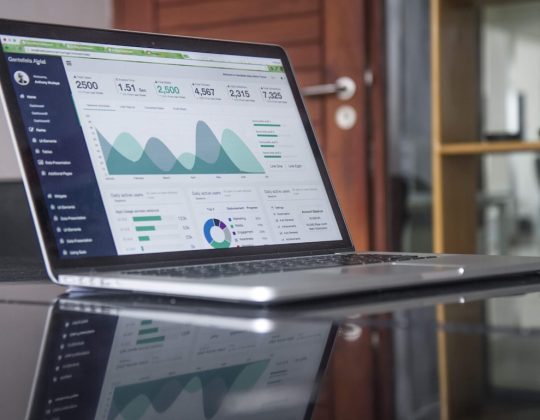With five billion active monthly users, companies have more chances than ever before to connect with their desired consumers via social media. But these opportunities bring choices- specifically about whether to put money into paid advertising or use organic marketing methods for expanding your presence.
Each strategy can lead to success, but which one is suitable for your business? The answer to this question relies on numerous elements, such as your financial plan, targets, and the people you aim for.
In the following article, we will dig into the main differences between promoting through social media and natural marketing plus how each method can add value to your brand.

Understanding Social Media Advertising
Social media advertising means you’re paying platforms like Facebook, Instagram, and TikTok, to show your content to more users. Paid advertisements are created to quickly increase your visibility, and often focus on users according to their demographic information, actions, or interests. When businesses use paid ads they can anticipate immediate results in relation to views impressions, clicks, and conversions but these typically only last while the ad campaign is active.
A big advantage of advertising on social media is that it can launch very specific campaigns. These platforms give detailed targeting choices, enabling businesses to aim ads at their perfect customer profiles. This could notably raise the possibilities of connecting with individuals who are more likely to interact with your content or buy what you’re selling. Also, advertising gives brands the chance to check performance numbers at the same moment they happen. This allows for quick changes that enhance campaign success.
Nonetheless, the negative aspect of social media advertising that you pay for is its expense. Companies with small marketing budgets might find it hard to handle the costs related to maintaining ongoing ad promotions, especially if there isn’t an immediate return on investment. After a campaign finishes, usually both traffic and interaction lessen unless continuous financial input is ensured.
The Power of Organic Marketing
Organic marketing, on the other hand, signifies content that expands naturally without help from paid promotion. This encompasses usual posts, stories, reels, and interaction with followers on social media channels. The focus of organic marketing is to create an engaged and loyal community over time – prioritizing long-term relationships instead of pushing for immediate benefits.
A major advantage of organic marketing is that it comes at no cost. By sharing useful content, interacting with your followers, and making the most out of your social media accounts, you can expand your brand’s influence without spending on paid advertisements. As time passes by, these activities might result in a committed fan base who trusts in what you offer and suggests it to others as well.
Nonetheless, organic growth consumes time. Establishing a strong presence via organic marketing may need months or possibly years of steady work. In addition, alterations in platform algorithms can at times restrict the spread of organic posts, rendering it challenging to guarantee that your material is viewed by your followers. Marketing in an organic way takes time and continuous effort, however, it can finally provide loyalty to the brand over a long-term and constant engagement.
Growing Your Social Media Followers
Regardless of whether you choose paid or organic methods, growing your social media followers is a critical component of your strategy. An engaged following increases your reach and amplifies your content to new audiences. But how can you grow your followers effectively?
First off, you need to choose your main platform, the place where you’ll be most active. Let’s take Instagram for example. You can post engaging, high-quality content, collaborate with other brands and influencers, and reply to every comment and DM you get, but all these things take time and effort.
If you want to speed things up and increase Instagram followers quickly, you can invest in growth services. They’ll bring you lots of followers who will engage with your posts, increasing your chances of ending up on the search pages of lots of potential followers. They’ll click on your content, and if it’s in line with their interests, drop a follow, without you breaking a sweat.

Content Creation: Paid vs. Organic
The kind of content you make will depend on whether you use paid ads or organic methods. For organic marketing, the content must show authenticity and value. People more often interact with posts that seem real and give helpful information or enjoyment. Telling stories, showing behind-the-scenes views, and making interactive content like polls and Q&A sessions usually get good engagement naturally because they promote a back-and-forth conversation between the brand and its audience.
For paid ads, content must be optimized for conversions. Ads should grab users’ attention fast, tell the main message quickly, and have a clear step you want people to do next. Since people might only look at an ad for a few seconds, it’s very important to use eye-catching pictures or videos that quickly show the value. Paid content usually has a more refined and professional style so it can make a strong first impact.
Measuring Success: What Metrics Matter?
When checking how good your social media work is doing, what you look at depends on what you want to achieve. For organic marketing, important things to measure are how much people interact with your posts (likes, comments, shares), the number of new followers you gain over time, and how many people see your posts. These measurements let you see how people are reacting to what you share and if your strategy without paid ads is good for making a group of followers around your brand.
For paid campaigns, important performance numbers like click-through rates, conversion rates, cost per click, and return on ad spend (ROAS) are very crucial. These figures show how effectively your advertising efforts are leading to the desired actions such as people visiting your website, buying products, or signing up for services. With paid advertising, it is possible to monitor very detailed information like the demographics and behaviors of your audience. This provides insights into how well your targeting works.
Budgeting for Social Media: Where Should You Invest?
Deciding how much money to spend on social media ads versus no-cost marketing is a common issue for businesses. If your budget is small, it is better to concentrate on organic marketing because this way you can increase your presence without paying anything first. However, if you need fast progress or want to reach certain goals soon, putting money into paid campaigns can give you the quick push you require.
Many companies prefer to use a combination of methods, putting money into both natural growth and paid advertising to get the best outcomes. For example, you might concentrate on building organic connections for regular interaction while occasionally launching paid ads to market new products, events, or discounts. By using both ways, you can create lasting bonds with your audience and also reach quick goals.
Bottom Line
When choosing between social media advertising and organic marketing, it is important to consider your goals, resources, and timeline. Social media ads give quick results you can measure but need money to spend. On the other hand, organic marketing helps grow in a lasting way with good engagement over time though it needs patience and regular efforts. Ideally, companies should think about using both methods to take advantage of their good features. This way, you can grow your social media audience better, interact with them more effectively, and reach your marketing targets.







